Feb. 1 is the start of a New Lunar Year.
Celebrated for thousands of years in many Asian cultures around the globe, the lunar new year is known by different names — such Chunjie (Spring Festival) in China, Seollal in Korea and Tết in Vietnam — but it always has family, food and fun at its core.
Lunar New Year begins on the second new moon following the winter solstice. It was originally a time for farmers to rest and have fun after months of hard work tending to their crops. Today, Lunar New Year has grown into a celebration full of tradition and rituals.
Below, some FEMA employees share what Lunar New Year means to them and how they’ve celebrated over the years.
Tina Lai Thomas
Tina Lai Thomas, her family and friends gather at a restaurant in Philadelphia’s Chinatown to celebrate. Dressed in red outfits, they exchange hóngbāo (红包): red envelopes with money inside.
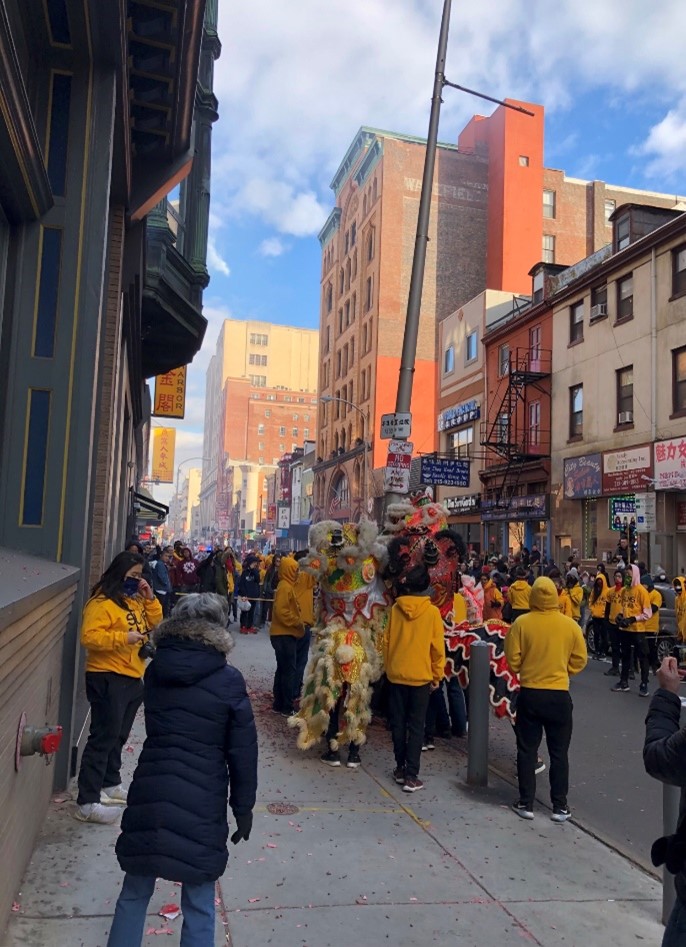
Crowds gather to watch a lion dance parade as part of Philadelphia’s Lunar New Year celebrations. Photo Credit: Tina Lai Thomas/FEMA Region 3.
Thomas, a Bever Valley Power Station Site Specialist in FEMA Region 3 Radiological Emergency Preparedness Program, spends time during the holiday with her family and friends by making – and eating – dumplings before venturing out to watch the lion dance parade. These Lunar New Year parades, popular in many east Asian cultures, are performed to attract good luck and drive away evil spirits.
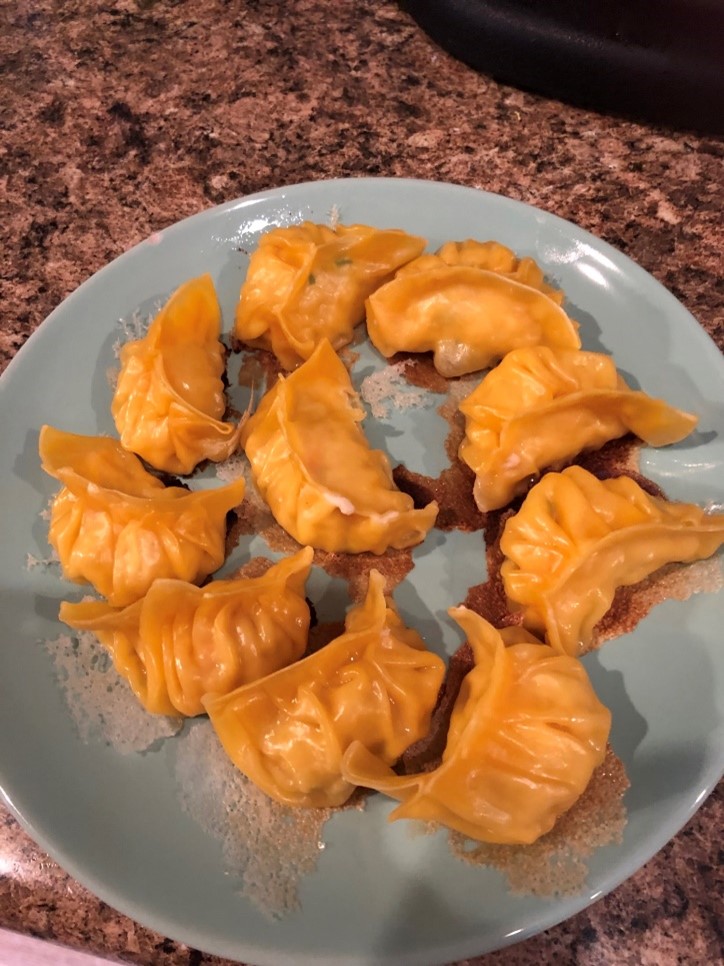
A plate of gorgeous dumplings, prepared by Tina Lai Thomas’s family. Photo Credit: Tina Lai Thomas/FEMA Region 3.
Seong Kim
Seong Kim’s family has several traditions to celebrate the important traditional Korean holiday known as Seollal. The celebration usually lasts three days: the day before New Year, New Year itself and the day after.
During the new year Koreans often visit family, perform ancestral rites, eat traditional food and play games. Additionally, children often receive money from their elders after performing a formal bow.
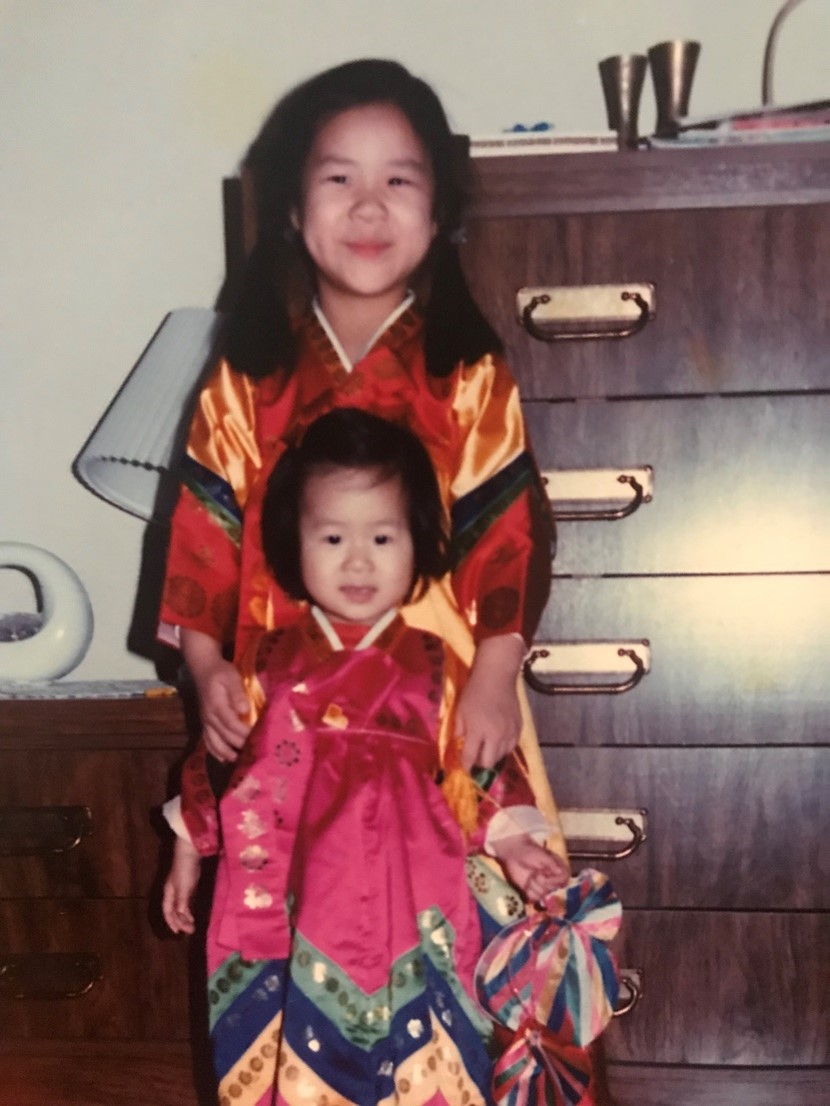
Seong Kim and her older sister dressed in hanbok to celebrate the Seollal feast. Photo Credit: Seong Kim/FEMA HQ.
Kim is an Enterprise Data and Analytics Modernization Initiative (EDAMI) Program Manager in the FEMA Office of Policy Program and Analysis at HQ. She has special memories of she and her older sister dressing up every year in traditional outfits called hanbok and bowing in respect to their parents.
The whole family would then feast on a Korean soup called ddukgook (rice cake soup) and hear about the hopes and wishes her parents had for their daughters. For Kim, this treasured family conversation is a reminder of how, as immigrants, they wanted their children to achieve, and be happy and healthy.
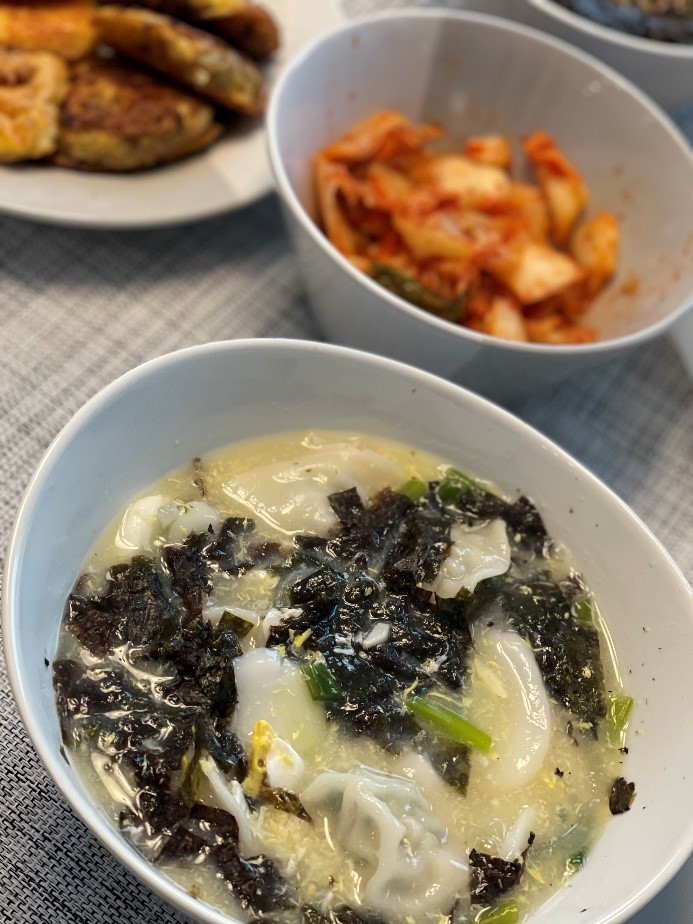
For Lunar New Year, Koreans traditionally eat ddukgook, a rice cake soup. Photo Credit: Seong Kim/FEMA HQ.
Gloria Huang
Gloria Huang remembers the superhuman effort her mom made to ensure there was a huge homemade meal for everyone to enjoy. The holiday is a time to spend meaningful time with family, and one of her favorite memories over the years is learning how to properly wrap spring rolls — which must always be made by the dozens and frozen for consumption throughout the whole month!
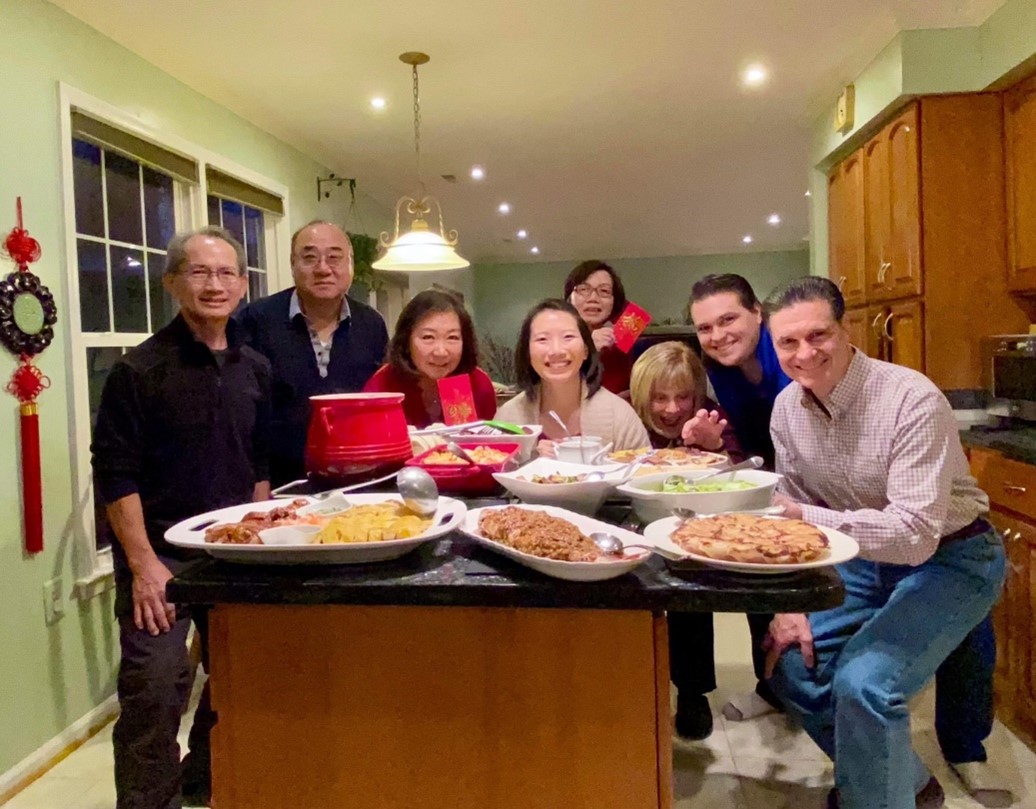
The Huang family gathers to celebrate the Lunar New Year with a homemade feast. Photo credit: Gloria Huang/FEMA HQ.
Huang, the Digital Engagement Branch Chief in the FEMA Office of External Affairs at HQ, fondly remembers visiting extended family in Taiwan to celebrate the new year. Although the distance meant it was rare to be with them on the holiday, Huang has a vivid memory of one visit during her childhood when she and her cousins ran around setting off fireworks on rooftops in Taipei.
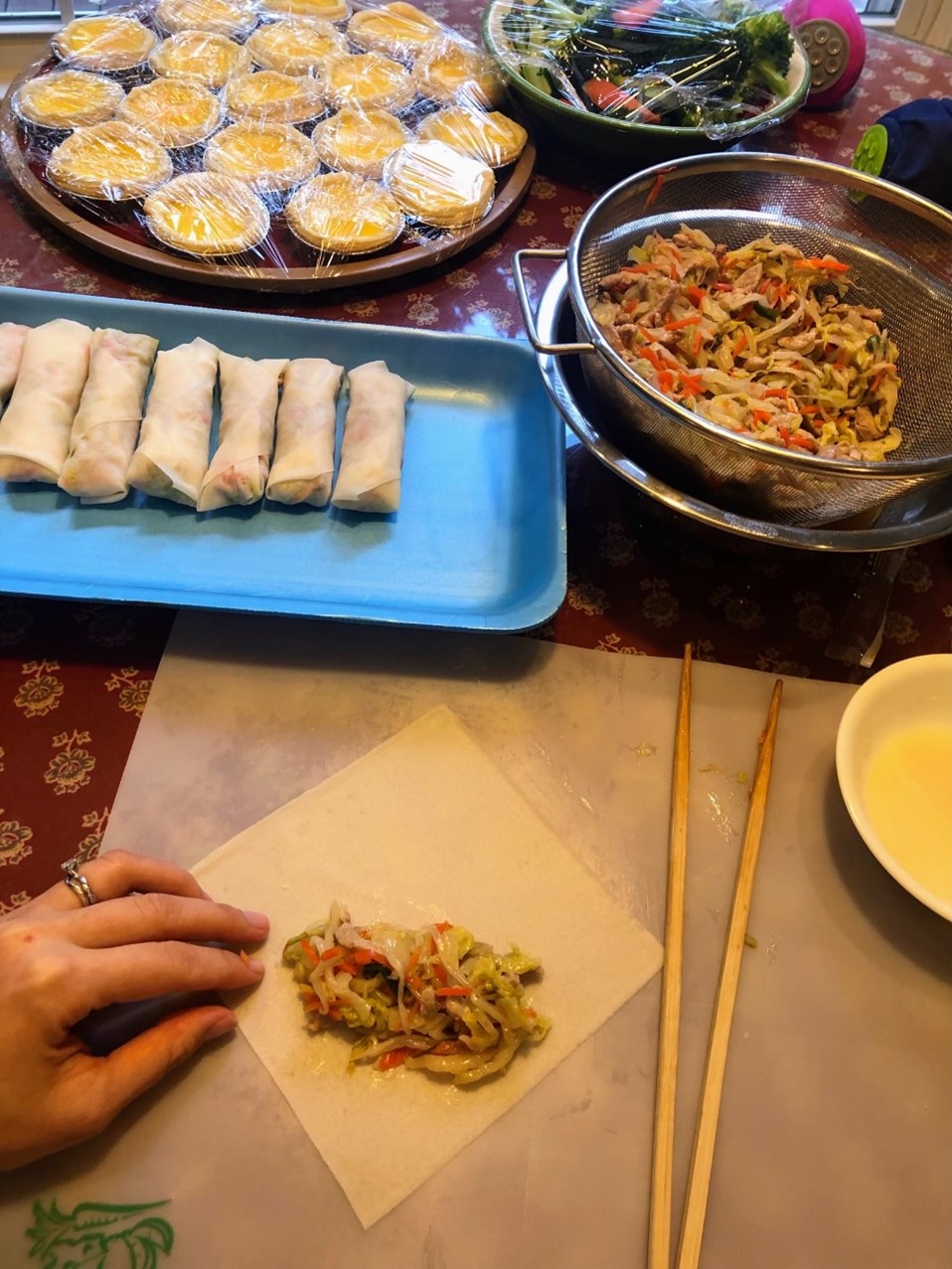
Perfecting the technique to wrap spring rolls takes patience and practice. Photo credit: Gloria Huang/FEMA HQ.
Minh Phan
Each year, Minh Phan celebrates Tết with his family and friends. Eager to share the culture and traditions behind this holiday, Phan participated in the University of Georgia Vietnamese Student Association’s annual culture nights. During the Múa Lân (Lion Dance) performance, Phan played the part of the Ông Địa (spirit of the earth). In Vietnamese culture, the Ông Địa helps to usher in good fortune and chase away evil spirits — while functioning as comic relief making the audience laugh and smile through funny antics.
Having the opportunity to participate in the lion dance and other unique performances each year gave Phan an opportunity to connect with his Vietnamese heritage amongst his peers.
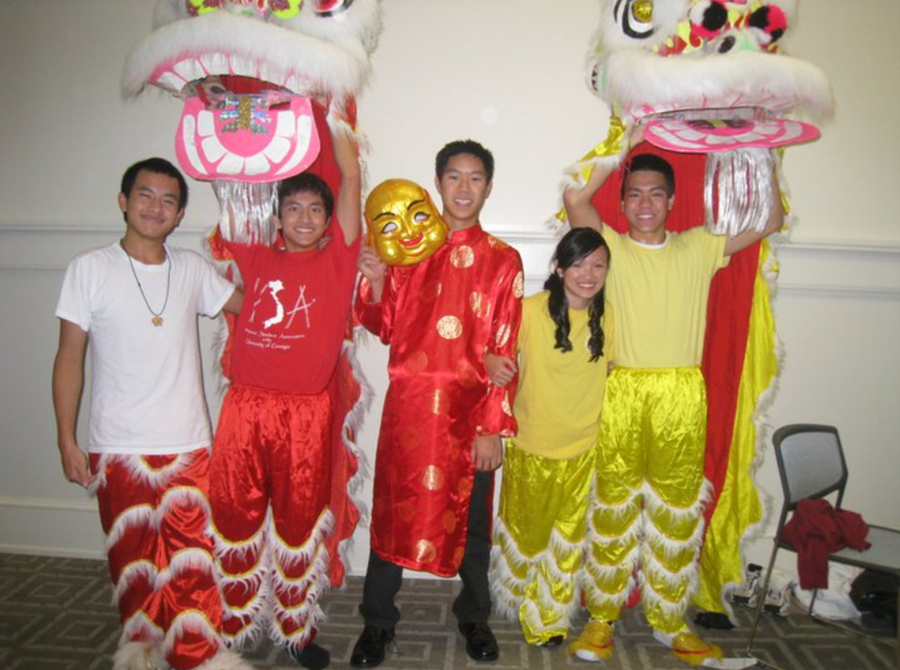
Minh Phan (center) and fellow members of the University of Georgia Vietnamese Student Association prepare to perform the traditional lion dance. Photo credit: Minh Phan/FEMA Region 8.
Phan, a Public Affairs Specialist in FEMA Region 8, cherishes his Vietnamese roots. He joined his bother and their parents in a portrait showcasing their Áo dài, the national garment of Vietnam. Taken in the early days of the COVID-19 pandemic, the photo shoot was a reminder that the family was stronger than ever and that together they would get through the difficult times.
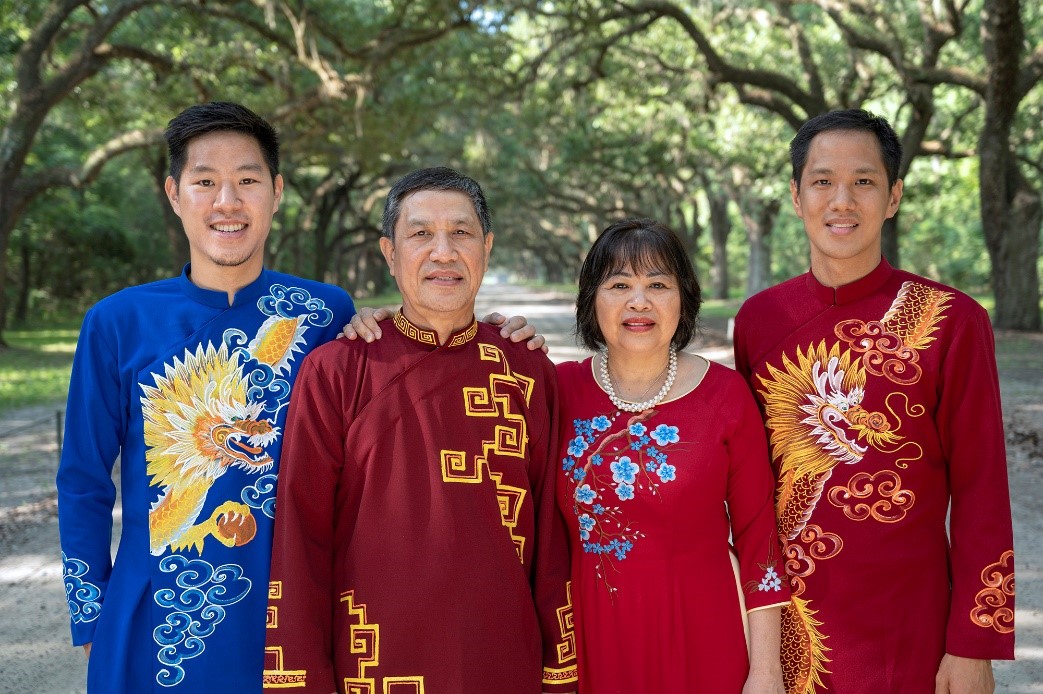
In a family portrait, Minh Phan, his parents, and brother wear Áo dài, the beautiful national garment of Vietnam. Photo credit: Minh Phan/FEMA Region 8.

